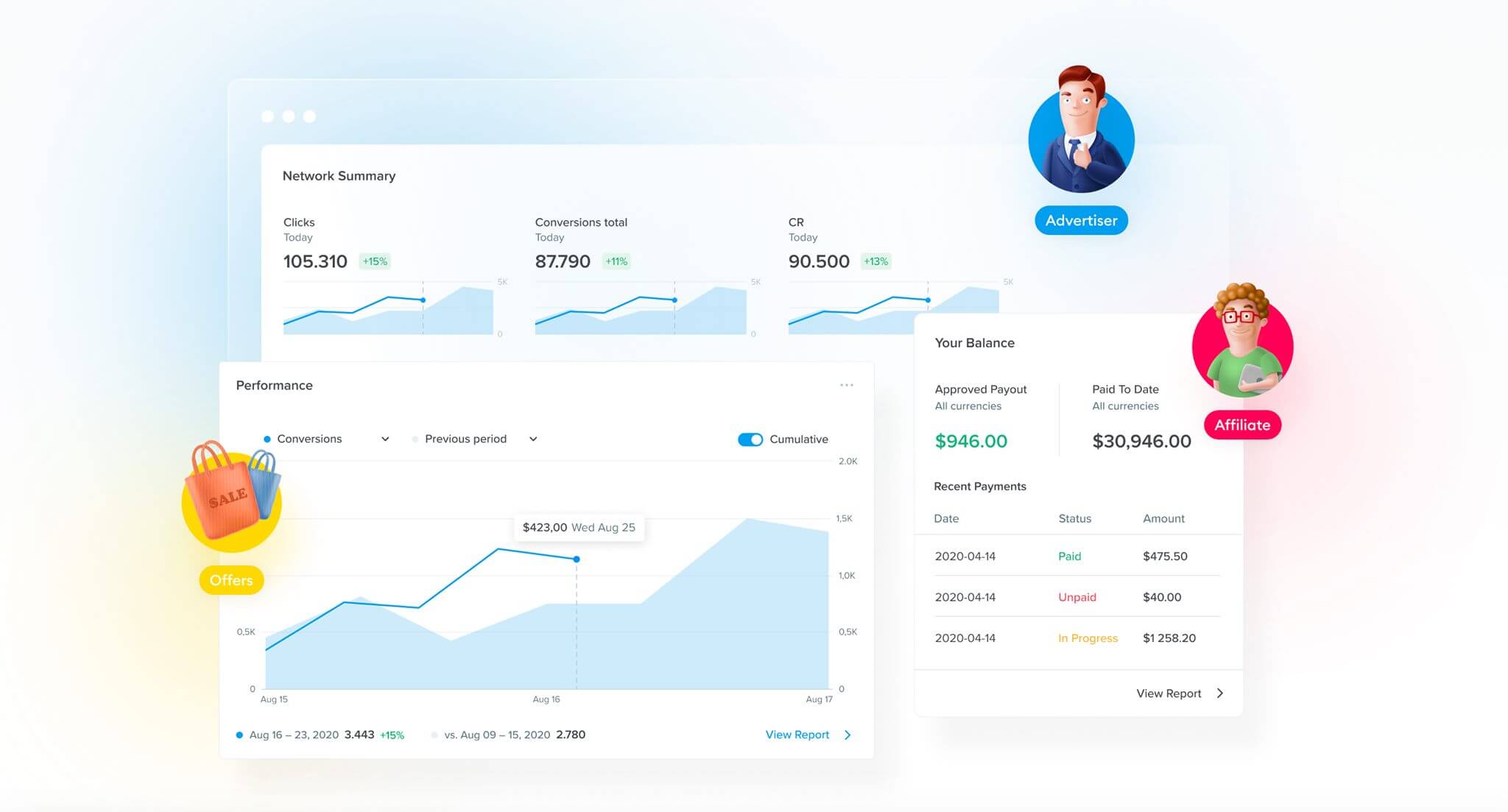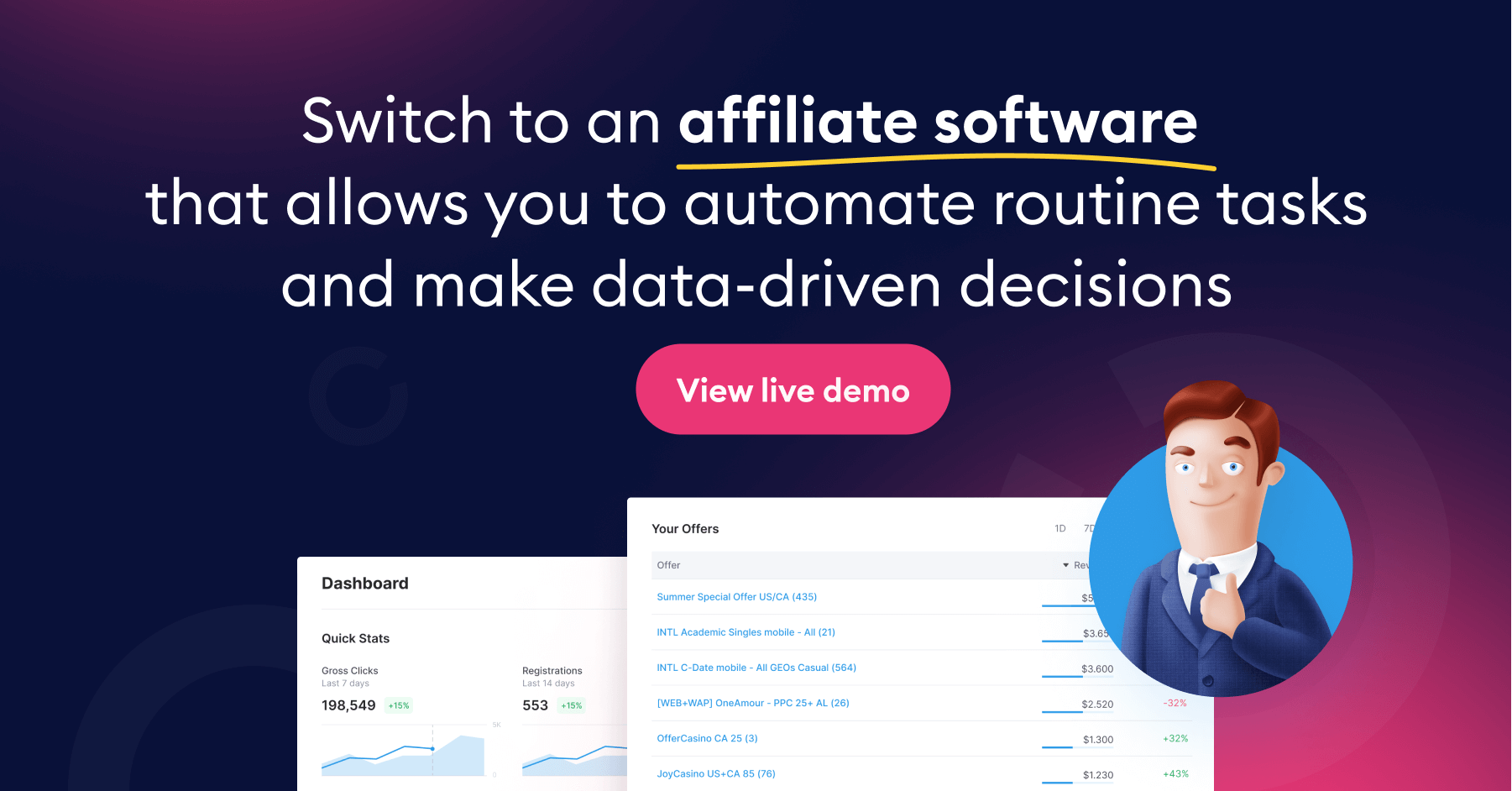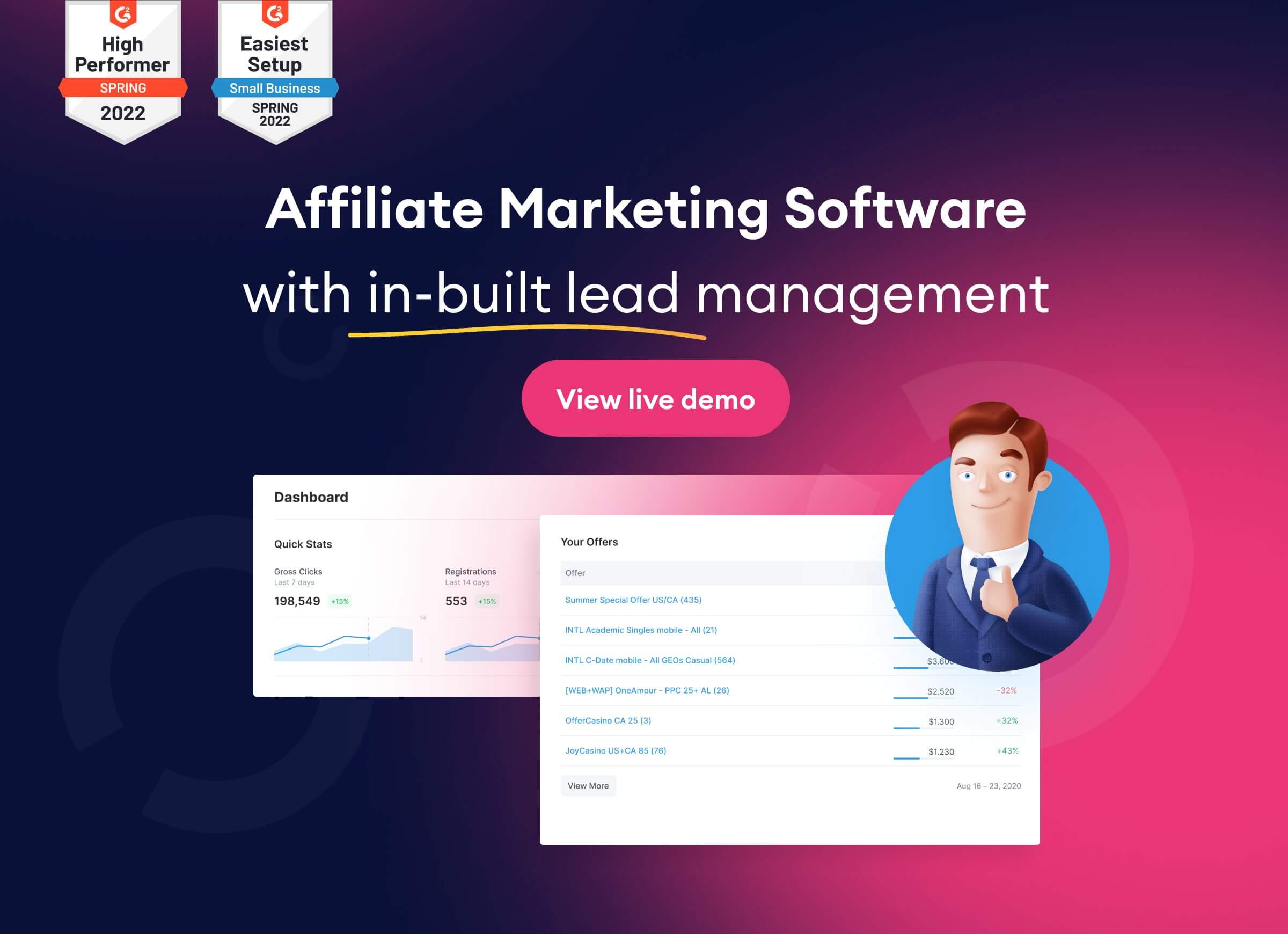So, you’ve launched an ad campaign, and now you want to know whether it’s successful or not? How can you know?
Logically, the only way to get the answer is to track your ad campaigns, right? Right. But what does that actually mean?
Tracking your ad campaigns is essential for ensuring you’re getting the most impact from your advertising dollars. By understanding where and how people interact and the value of each advertising channel, you can determine which channels are actually performing and which ones need more attention or added resources.
But, what is the best way to go about tracking your campaigns?
In this article, we’ll walk you through a step-by-step guide for tracking your ad campaigns for maximum effect. We’ll give you tips on identifying key performance indicators (KPIs) for each advertisement and then provide useful tools for proper monitoring over time.
What Is Campaign Tracking and Why Is It Important?
Campaign tracking is an important tool for understanding the effectiveness of your marketing efforts. By accurately tracking and analyzing data from your ad campaigns, you can gain valuable insights into what works and what doesn’t – so you can make informed decisions on optimizing and improving your advertising in the future.
When done right, campaign tracking can do more than just measure how well an ad performed; it can help to inform your future strategies and decisions. You’ll be able to identify the types of ads that were most successful for different audiences, demographics, and products – allowing you to focus on the techniques that will bring the most success in the future. This is especially true if you use advanced analytics software such as Scaleo, which provides real-time data, allowing marketers to adjust their campaigns quickly.
The key to effective campaign tracking is setting up measurements for each of your campaigns before they are launched. Make sure you know exactly what success should look like for each campaign so you can build a measurable goal that reflects this objective. From there, track all the data associated with your ad and compare it against those performance metrics to determine whether or not the campaign was successful. How do you do it?
Setting Up the Right Campaign Tracking Goals
When it comes to properly tracking your advertising campaigns, one of the most important steps is to set up the right goals for tracking. Having set goals will help you stay on track and accurately measure performance.
The goals you should set for each campaign will depend on your overall objective and the type of advertising you are doing. Here are a few common goals that a business might have when launching an ad campaign:
- Increase website traffic
- Increase brand awareness
- Increase conversions (sales or leads)
- Increase customer loyalty
- Launch new products or services
Once you’ve set up the relevant goals for your campaign, you’ll need to define how you’ll actually track them. Each goal should have metrics that can be measured and tracked, such as click rates, impressions, cost per lead, cost per conversion, and more. Tracking these metrics will allow you to measure your campaign performance and determine your ROI effectively.
Understanding the Key Metrics and How to Measure Success
Once you’ve set up your ads and they’re running, it’s time to start tracking the success of your campaigns. To do this, you’ll want to look at a few key metrics to help you understand your ads’ effectiveness.
Impressions and Reach
- Impressions are recorded when someone sees your ad;
- Reach is the number of unique people who have received those impressions.
These two metrics should show you how far-reaching your ad campaigns are and how many people have seen them.
1 – Clicks and Engagement
- Clicks are recorded when someone actually clicks on the ad, taking them directly to whatever page or offer you’ve advertised.
- Engagement measures how actively users interact with your ad — like scrolling, liking, or commenting — that indicates an interest in your offer.
These two metrics will tell you how successful your ad campaign is in terms of actually getting customers to take action on what you offer.
2 – Conversion Rate
The conversion rate shows how successful your ads are in terms of driving customers to make a purchase or sign up for your offer. This metric will let you know if your ads are getting people to take the desired action. If your conversion rate is too low, it tells you that changes need to be made for your campaigns be to be more effective.
By measuring these different metrics, you can accurately measure how effective your ad campaigns are in reaching their intended audience and getting them to take action on what’s offered.
Integrating Campaign Tracking Tools With Your Business
If you want to ensure that your ad campaigns have the most impact, you need to track them constantly. To do this, you can integrate campaign tracking tools.
These tools provide insights into what’s working and what’s not and can help you optimize campaigns for maximum efficiency.
With these insights, you can better target your ads and get more bang for your buck.
Ways to Integrate Campaign Tracking Tools
Incorporating campaign tracking tools is a multi-step process. Here are a few steps to get you started:
- Identify key performance indicators (KPIs) that align with your business goals.
- Select the right marketing tracking software for your needs and industry.
- Set up the tracking code and test it on different platforms to ensure it works accurately.
- Monitor campaign performance and analyze data regularly to optimize campaigns over time.
- Create reports that clearly communicate progress and ROI.
By leveraging the power of campaign tracking tools and software, you can gain valuable insights into how your ad campaigns perform and adjust them for maximum impact.
Automating the Campaign Tracking Process for Better Efficiency
Automating the process is the fifth and arguably most important step of tracking your ad campaigns for maximum impact. Automating campaign tracking allows you to monitor your campaigns in real time and make adjustments quickly to get the most out of them.
Ad Tracking Software
Ad tracking software can be used to set up automated tracking solutions that will monitor your campaigns and give you insights into how they’re performing. This can help you identify issues quickly and make any necessary adjustments in order to maximize your ROI.
The main difference between tracking software and a tracking tool, generally speaking, is that tracking software is oftentimes more advanced, offering more features and much more in-depth analytics, as well as a ton of automation tools like billing, onboarding new affiliate partners, and more. If you want to make the most of your campaigns and have a great and clear overview of your performance, you most likely need software.
Why Choose Scaleo?
Scaleo is a comprehensive affiliate marketing software that provides all the necessary tools to track ad campaigns effectively.

It offers advanced reporting and analytics that allow businesses to monitor their ad campaigns in real-time and make data-driven decisions. With Scaleo, businesses can track various metrics such as clicks, conversions, revenue, and more, which enables them to optimize their campaigns for maximum performance.

Scaleo is highly customizable and can be tailored to the specific needs of a business. It supports multiple languages, currencies, and payment methods, making managing international campaigns easy.
Moreover, Scaleo provides customization options for ad creatives, landing pages, and conversion tracking, allowing businesses to create a unique brand experience for their customers.

Analyzing Data
As we have mentioned several times throughout this article, having access to accurate data is essential when evaluating an ad campaign’s success. With automated ad tracking, you can collect data from all your traffic sources—including social media, web analytics and email—and analyze it quickly to make informed decisions about optimizing your campaigns for better performance.
Automated campaign tracking also offers other benefits, such as improved accuracy across multiple channels and a greater ability to measure the impact of specific creative elements, such as images or copy.
All these factors combined ensure that you’re always getting the best results from each of your campaigns.
Analyzing and Optimizing Campaigns for Maximum Impact
Analyzing and optimizing ad campaigns is an important step to ensure that you are getting the most out of your advertising efforts. Here are a few tips for ensuring maximum impact when tracking your campaigns:
Set measurable goals
Before launching any campaign, it’s important to set clear, measurable goals with attainable results. Having goals gives you something to measure against and allows you to calculate (and later on – predict) the success of your campaigns.
Track results
Once a campaign is launched, track its progress and results, both positive and negative. Analyze the data on a daily basis and make adjustments as needed. This helps ensure that you are taking full advantage of the advertising opportunities available to you.
Iterate often
Don’t be afraid to iterate on your campaigns. By making small but consistent changes, you can maximize its impact while minimizing mistakes and wasting resources. This also allows you to quickly identify what works and what doesn’t so that future campaigns will be even more effective.
As long as you are tracking your campaigns properly, you should have no problem ensuring maximum impact from each one. By setting clear goals, tracking results, and iterating often, you can get the most out of each campaign for your business.
In a Nutshell
Advertising campaigns are essential for any business or product to gain visibility and attract customers. However, creating a successful campaign is only the beginning. You must track and measure its performance to maximize its impact. In this post, we covered a step-by-step process of preparing and tracking your ad campaigns for maximum impact. Let’s recaputilate:
Step 1: Define Your Campaign Objectives
Before you start tracking your ad campaigns, you must define your objectives.
- What do you want to achieve from your ad campaign?
- Do you want to increase brand awareness, generate leads, drive website traffic, or increase sales?
Defining clear objectives will help you choose the right metrics to measure and evaluate the success of your campaign.
Step 2: Choose Key Performance Indicators (KPIs)
After defining your objectives, choose the key performance indicators (KPIs) you will use to measure the success of your campaign. The KPIs should be:
- specific
- measurable
- aligned with your objectives
Examples of KPIs include:
- website traffic
- click-through rate
- conversion rate
- engagement rates
- sales
Step 3: Set Up Tracking Tools
To track your ad campaigns, you need to set up tracking tools or add partner tracking software. Popular tracking software like Scaleo can be combined with Google Analytics, Facebook Ads Manager, and other analytics tools provided by your ad platform. These tools allow you to track metrics such as impressions, clicks, conversions, and other performance indicators.
Step 4: Create Custom Tracking URLs
Custom tracking URLs enable you to track the source of your traffic and measure the success of your campaigns accurately. Create unique tracking URLs for each:
- ad campaign
- platform
- ad group
Tracking URLs allows you to:
- track your ad campaigns’ effectiveness
- identify which campaigns are driving the most traffic
- optimize your campaigns accordingly
Step 5: Monitor Your Campaign Performance
After setting up tracking tools and custom URLs, keep an eye on your campaign performance. For example, if you notice that one campaign is driving more traffic than others, you may want to allocate more budget to that campaign or create similar campaigns.
Step 6: Analyze Your Data
Regularly analyze your campaign data to identify patterns, trends, and opportunities. Use the data to optimize your campaigns by adjusting your:
- targeting
- ad copy
- bidding strategy
Continuously monitoring your campaign data allows you to make informed decisions and maximize your advertising impact.
Step 7: Test and Refine Your Campaigns
Testing and refining your campaigns is crucial for improving their performance. Conduct A/B testing to compare different versions of your:
- ad copy
- images
- targeting
to identify the best-performing combination.
Use the results to refine your campaigns and improve their effectiveness.
Conclusion
To wrap up, being able to accurately track your ad campaigns is critical for success. It’s key to knowing how much money you’re spending and what you’re getting in return, as well as giving you the data you need to make future campaigns successful.
By following the steps outlined in this article, you can stay on top of your campaigns to make sure they’re working as effectively as possible. Knowing how to track your campaigns properly will help you save money and maximize the impact of your marketing efforts.
Looking for reliable affiliate tracking software to track your ad campaigns?
- Scaleo is scalable and flexible, making it suitable for businesses of all sizes. It offers various pricing plans based on the number of clicks, which means that businesses only pay for what they use.
- Scaleo can be integrated with other marketing tools and platforms, such as Google Ads, Facebook Ads, and email marketing software, which makes it easy to manage all marketing activities from a single platform.
- Scaleo is easy to use and offers a user-friendly interface that simplifies the ad campaign tracking process. It provides a dashboard that gives businesses an overview of their campaigns and enables them to manage their affiliates, create custom reports, and set up notifications.
Start your own 14-day free trial, no credit card required!

Last Updated on October 18, 2023






